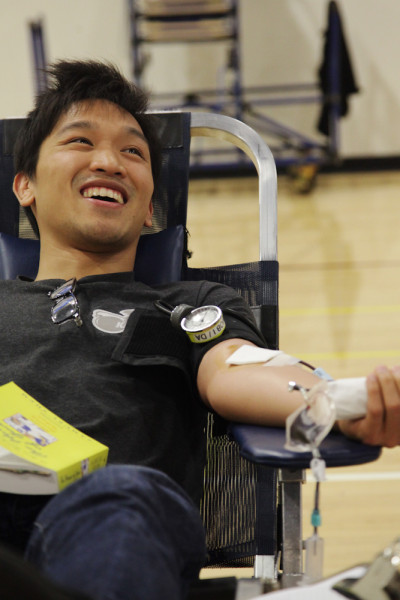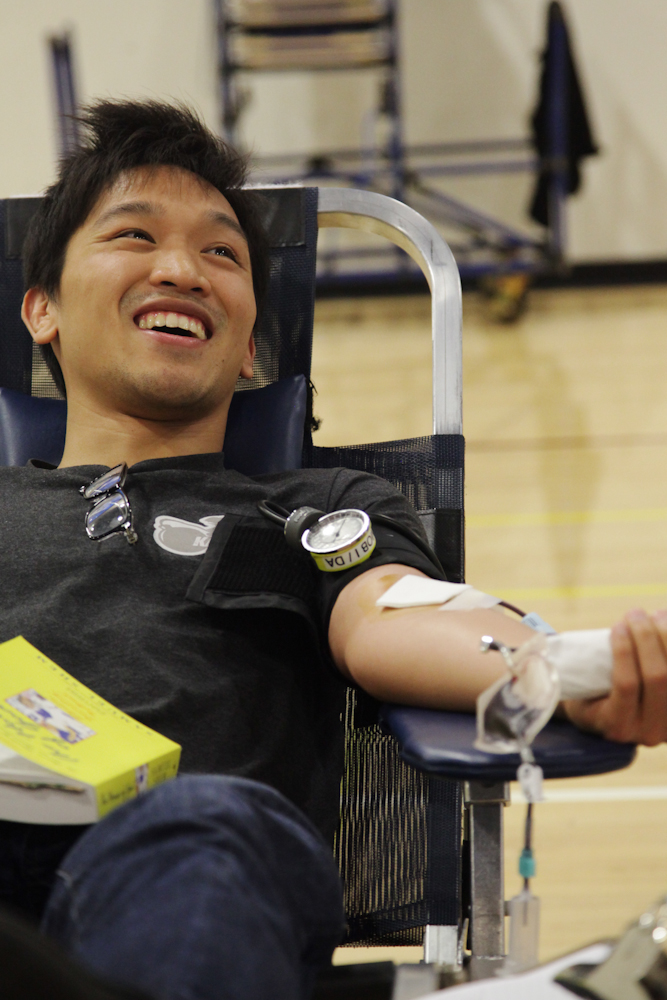No lives have been lost on account of the historic Stanford-Cal rivalry, but with a Big Game week blood drive, this traditional showdown may save a few.
On Nov. 19, the Stanford Blood Center held the seventh annual “Rivals for Life” blood drive as part of a contest with Cal’s blood bank to see which university can get the larger amount of blood donation this drive. Stanford has collected more blood than Cal in each of the past five years.

The “Rivals for Life” blood drive is one of the largest annual drives at Stanford, according to Stanford Blood Center communications specialist Deanna Bolio. This year, it was held at the Arrillaga Center for Sports and Recreation between 11 a.m. and 7 p.m. and was expected to gather between 200 and 300 units, or pints, of blood. Last year’s drive at Stanford raised 266 pints of blood, and between 2008 and 2012, the “Rivals for Life” blood drive has raised 1,264 units of blood.
Bolio said the Stanford Blood Center did not have a specific target for this year’s blood drive but that its “goal is just to beat Cal.”
For comparison purposes, the average American can hold 10-12 pints of blood. Bolio said that for an operation like a lung transplant, approximately 60 or 70 units of blood would be needed. According to the American Red Cross, 30 million blood components are transfused in the United States every year.
The Stanford Blood Center provides blood to seven different hospitals in the Bay Area, but the main recipient is Stanford Hospital.
For the “Rivals for Life” drive, the Stanford Blood Center solicited donations from students, faculty, staff and members of the local community. Donors had to meet certain health eligibility conditions required for all blood drives.
At least 236 people made pre-appointments to donate blood at the event, but the blood center also accepted walk-in donors. Donors received free T-shirts and were entered into a raffle.
Donors with all blood types were welcome, though there was a particular need for type O negative blood donors, as people with this type are considered universal red blood cell donors — their blood can be transfused into anyone. There are four different major blood groups: A, B, AB and O, each of which can be either negative or positive based on protein markers on blood cells. It is important for doctors to give patients the right type of blood to avoid rejection.
The “Rivals for Life” drive was set up in the basketball courts of the Arrillaga Center for Sports and Recreation, and the blood donation process involved four phases: a medical history, a mini-physical to ensure that donors were healthy enough to give blood, the donation itself and snacks. While waiting, blood donors could watch a montage of Stanford football highlights on a large television.
Holly Dayton ’17 said she likes helping people out by donating blood.
“It makes me feel like I’m making a difference with something I’ve got plenty of and somebody else doesn’t have enough of,” said Dayton.
“I think it’s spectacular to see young people donating blood,” said Stanford football’s director of player development Ron Lynn, who also made a blood donation. Lynn praised how young people were aware of the need for people to donate blood.
For people interested in giving blood who missed this blood drive, the Stanford Blood Center accepts donations throughout the year. More information about upcoming drives can be found on its website.
Contact Caleb Smith at caleb17 ‘at’ stanford.edu.
